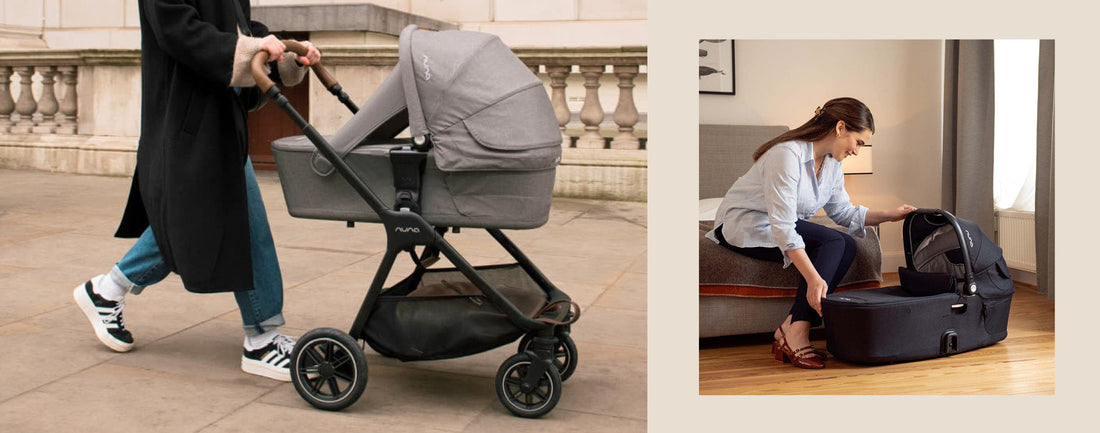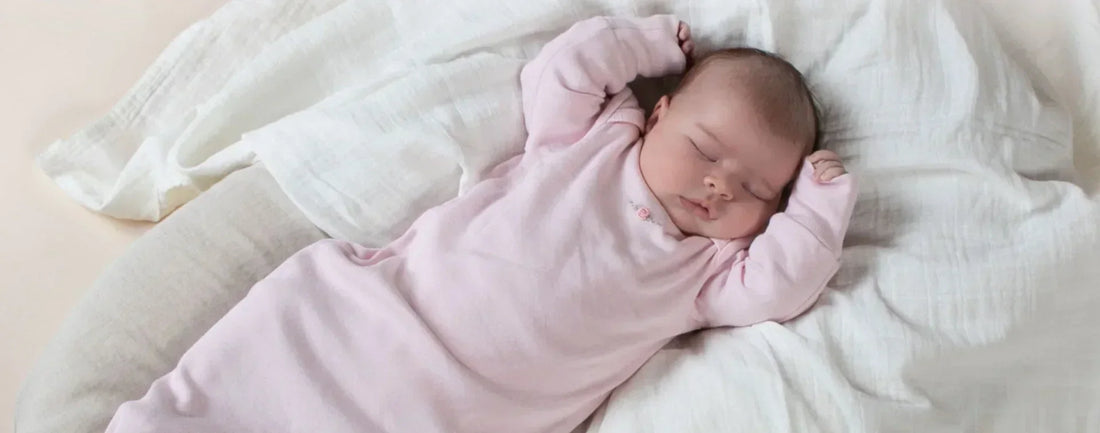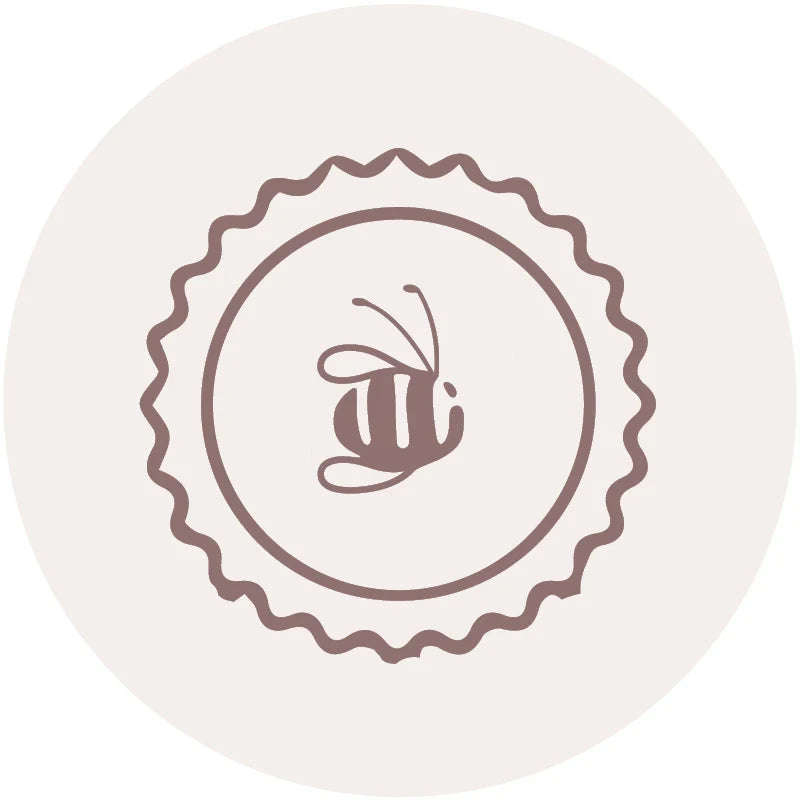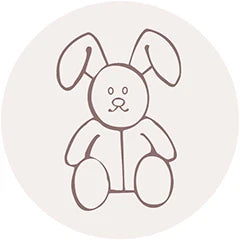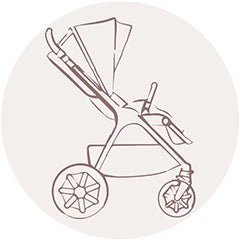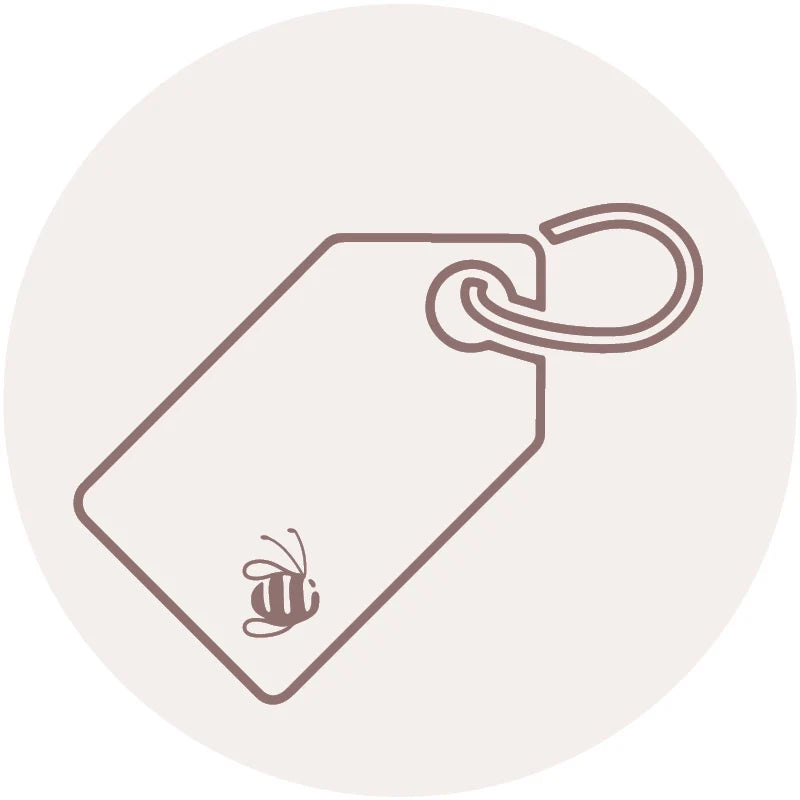Edwards & Co Lucci Avery Capsule Adapter
Edwards & Co Lucci Avery Capsule Adapter
SKU:EC228-100
In stock
Couldn't load pickup availability
Overview
Overview
Make transitioning from car to stroller a breeze with the Lucci Avery Capsule Adapter. Designed for the Edwards & Co Lucci stroller, this easy-to-use adapter lets you quickly attach your Avery capsule without disturbing your baby. Simply click it on, and you're ready to roll. It’s the perfect solution for busy parents who want convenience and safety in one!
What's Included
What's Included
Technical Specification
Technical Specification
Delivery and Returns
Delivery and Returns
- Delivery: Free within NZ on orders over $100 (excluding bulky items) or $8 standard shipping
- Returns: Accepted within 14 days of receipt with proof of purchase
- Some items are excluded from returns including sale items, hardware, car seats, prams, monitors and personal items - please click here for the full list.
Share this product
Recently Viewed Products
Related Blogs
The Benefits of Having an Infant Capsule
The Benefits of Having an Infant Capsule When preparing for life with a newborn, it’s easy to feel overwhelmed by the gear you’ll need. However, one item that quickly proves indispensable is the infant capsule. Not only does it ensure safe travel for your little one, but it also simplifies everyday routines in ways that many new parents come to appreciate. So, what makes an infant capsule so essential? 1. Seamless TransitionsOne of the most convenient features of an infant capsule is the ability to move your baby from the car to the pram—or straight into the house—without disturbing their sleep. With a capsule, there’s no need to unbuckle or shift a drowsy newborn between seats. Simply lift the carrier off the base and you’re good to go. It's important to remember that newborns should only sleep in capsules or car seats for short periods. 2. Tailored Newborn FitUnlike regular car seats, capsules are specifically designed to support newborns, offering a snug and comfortable fit from the very first days. Most come with removable newborn inserts to cradle your baby and provide optimal positioning as they grow. 3. Safety FirstInfant capsules are designed with your baby’s safety as a top priority. With features like side-impact protection, memory foam padding, and extendable canopies, they provide extra reassurance for parents who want the very best protection for their little one while on the move. 4. Lightweight and PortableInfant capsules are lighter and easier to carry than convertible car seats. They’re perfect for quick trips out or when you want to pop into the shops or grab a coffee with your baby in tow. The portability of these capsules is a game-changer for busy families who need to get in and out of the car quickly. 5. Travel System ReadyA key benefit of many infant capsules is their compatibility with prams, creating a complete travel system. This makes it simple to move your baby from the car to the pram, or anywhere else, without disturbing them too much. Many premium capsules integrate seamlessly with strollers, giving parents the flexibility to choose the best combination for their lifestyle. Choosing the Right Capsule for Your Family When it comes to choosing the best capsule for your needs, some designs offer unique features that cater to different lifestyles. For families looking for a versatile, all-around solution, the Nuna ARRA™ Flex offers an exceptional blend of comfort and convenience. The ARRA Flex features a nearly-flat 157° recline, allowing for optimal spine and hip development, and can be used both in the car and on any Nuna stroller. Its sleek design and thoughtful functionality make it ideal for parents seeking a capsule that accommodates their busy lives, while still prioritizing baby’s comfort. For those prioritizing the best sleeping position, the Nuna CARI™ NEXT is a full lie-flat carrycot that secures into the base, providing a natural, ergonomic sleep position for baby. It’s an ideal solution for longer journeys, allowing your baby to rest comfortably throughout the ride. Its lightweight design and stylish finish offer both practicality and elegance for parents who want a premium, travel-friendly option. It's also compatible with most of the Nuna strollers too! If you live in the city or often switch vehicles, the Nuna PIPA URBN is the perfect option. With built-in ISOFIX and no need for a separate base, it installs in seconds—ideal for ride shares or households with multiple cars. Its ultra-lightweight construction and quick installation make it an incredibly practical choice for families on the go. For those seeking a capsule with premium safety features and materials, the Maxi Cosi Mico Luxe is a soft and comfortable option with excellent side-impact protection. The capsule’s breathable bamboo fabric and superior padding ensure baby stays snug and supported. Another excellent choice is the Cybex Cloud T, a premium infant capsule offering a recline function for a comfortable, lie-flat position outside the car, ideal for newborns. It features a 180° rotating mechanism for easy on-and-off boarding and can be paired with the Base T for secure installation. The Value of a Capsule No matter which capsule you choose, having one can make a huge difference in your daily life. They provide smooth transitions, superior comfort, and important safety features that give parents peace of mind. Whether it’s a quick errand or a long drive, the right capsule can make life with a newborn that much easier. For parents who seek a perfect balance of style, safety, and functionality, the right infant capsule isn’t just about convenience—it’s about providing the best possible experience for both you and your baby, wherever your day takes you. The above suggestions and many more options are now available online, here at Dimples!
Learn moreWhy Carrycots Are One of Our Best Sellers
Carrycots – Essential or Nice to Have? How a Carrycot can make a new parent’s life easier When preparing for your baby’s arrival, the list of must-have essentials can seem endless—carrycots, capsules, bassinets, and buggies, all competing for your attention. Among these, carrycots often sit in a grey area, leaving parents wondering if they’re truly necessary. However, there are several reasons why carrycots are one of Dimples’ best-sellers, and we’re here to explain why they could make your life a whole lot easier. What is a Carrycot? A carrycot is a lightweight, portable bed designed for babies up to around three to six months old (or about 10kg). Unlike a traditional bassinet or Moses basket, a carrycot attaches to your stroller, making it perfect for sleeping while you’re out and about. Its flat, firm mattress ensures your little one can lie down comfortably, and the design keeps them safe, supported, and relaxed while they nap. As your baby grows, they’ll eventually outgrow the carrycot, but for the first few months, it provides a cosy, familiar space that’s easy to move with you. Why Do You Need One? You’ve likely already invested in a capsule for car trips and a bassinet for naps at home, so you might be wondering where a carrycot fits into the mix. Let’s take a closer look at the benefits it offers: Carrycots vs. Capsules for Sleeping Capsules are often designed to easily attach to your stroller for convenience, allowing you to transfer your sleeping baby from the car to the stroller without waking them up. However, experts caution against leaving your baby in a capsule for extended periods. Babies need to lie flat to keep their airways open, and when they're in a capsule, their heads can flop forward, which could compromise their breathing. A carrycot, however, provides a flat surface for your baby, ensuring proper alignment and safe sleep. While it can be tempting to leave your baby in the capsule for longer outings, a carrycot offers a far safer sleep solution for extended naps or trips to the park. Moving them from capsule to carrycot after a quick car trip helps keep their sleep environment safe and comfortable. Take a Walk While They Snooze One of the perks of a carrycot is the ability to get outside and enjoy some fresh air while your baby naps peacefully. After feeding or playtime, simply attach the carrycot to your stroller, and off you go! The gentle movement of the stroller, combined with the outdoor sounds, is often just the right combination to lull your little one into a restful sleep. Carrycots are designed to be outdoors-friendly, with weatherproof fabrics, adjustable canopies, and compatible rain and sun covers, so your baby stays protected no matter the weather. Even better, when your baby is deep in sleep, you can easily unclip the carrycot from the stroller and bring them inside to continue their nap. That means you get to enjoy a quiet moment to yourself while your baby stays snug and safe. Carrycots vs. Portacots for Overnight Stays When it comes to overnight visits, whether to Grandma’s house or a weekend getaway - a full-sized portacot can be a hassle to pack and set up. A carrycot, on the other hand, is compact and easy to transport, making it the ideal sleep solution for short stays. With a firm mattress and familiar surroundings, your baby is more likely to settle quickly in a carrycot, even in a new environment. Carrying a bulky portacot for a quick trip or family visit can feel like overpacking, especially when you have a simple, lightweight carrycot that does the job just as well. The convenience of clipping it onto your stroller for a walk, and then using it as a portable bed for overnight stays, gives you the best of both worlds. Say Goodbye to the Bassinet A bassinet or Moses basket can take up a fair amount of space in your home, and while they're lovely for the first few months, they’re not always necessary if you have a carrycot. Many parents find that a carrycot serves as both a primary sleep spot at home and a portable solution for outings. Since a carrycot is designed for safe sleep, you can use it as your baby’s designated napping spot - whether at home, in the park, or at a friend’s house. Plus, since it’s only useful for a limited time, you get the most out of it by making it your go-to sleeping solution in those early months. Carrycots vs. Lie-Flat Strollers Many strollers are suitable for newborns, but most require the baby to be strapped in. If your baby is swaddled or sleeping peacefully, it can be a hassle to unstrap them and disrupt their comfort. With a carrycot, you can avoid all those buckles and straps. Simply place your baby in the carrycot, and you’re good to go - no need to worry about disturbing them or removing their swaddle. This makes the carrycot a much easier and more comfortable option for those first few months. What to Look for in a Carrycot Choosing the right carrycot is about more than just size - it’s about convenience, comfort, and safety. Here are some key features to look for: Certified for overnight sleep: If you plan to use the carrycot for naps and nighttime sleep, ensure it’s certified for overnight use. Weatherproof accessories: Look for a carrycot with a generous canopy, plus optional rain and sun covers, especially if you’ll be using it outdoors. Easy to carry: While the carrycot will often be attached to your stroller, you’ll also need to carry it at times. Make sure it has sturdy, comfortable handles that make it easy to transport. Easy care: Babies can be messy, so choose a carrycot with machine-washable components like the mattress cover or liner. Easy to connect: You don’t want to struggle with complicated clips when your baby is having a fussy moment. A carrycot that’s easy to attach and detach from the stroller will save you time and frustration. Compatibility: Ensure the carrycot fits securely on your stroller. The combination of a carrycot and stroller is crucial, as you’ll use it for many months to come. Final Thoughts While not essential for everyone, many parents find it a really useful addition in those early months – giving their baby a safe, flat sleeping space that’s easy to move from stroller to indoors without disturbing precious naps. Whether you’re out for a walk, visiting family, or just needing somewhere for baby to rest during the day, a carrycot can help simplify life a little. If you’re unsure whether a carrycot is the right fit for your family, feel free to get in touch or pop into store – we’re always happy to help you figure out what’s best for you and your baby. We have some amazing bundles to choose from, as well as a range of choices to suit you. Check out Dimples’ range of carrycots here.
Learn moreThe Best Strollers for Travel: Lightweight & Convenient
Your Guide to Travel Strollers: Smooth Adventures With Baby in Tow Travelling with a baby or toddler can be a joy – but it definitely comes with its challenges. Whether you’re navigating airports, jumping on and off trains, or exploring city streets, having the right stroller can make all the difference. Why Choose a Travel Stroller? Everyday strollers tend to be packed with extra features that are great for everyday usage but can make them more bulky. When it comes to travel, compact and lightweight is the way to go. Travel strollers are designed to be easy to carry, fold, and store – perfect for life on the move. What to Look For Foldability: Look for a stroller that’s easy to fold – ideally one-handed. Weight: A lighter stroller is easier to lift into car boots, overhead lockers, or up stairs. Compact Size: Check the folded dimensions – the smaller, the better for travel. Portability: Is there a carry strap or handle? This makes a big difference on the go. Manoeuvrability: Smooth steering and good suspension can help you navigate tight spaces and bumpy pavements. Comfort: Reclining seats, padded cushions, and a sun canopy keep your little one happy on the move. Storage: A basket underneath for snacks, nappies, and must-haves is a handy bonus. Accessories: Travel bags, rain covers, and cup holders can all add extra convenience. Plane Travel Suitability: If you want to carry your stroller onboard, check the size. IATA (the International Air Transport Association) recommends 56 x 45 x 25 cm for carry-on, but rules can vary by airline and aircraft, so always double-check before you fly. You may also be able to use your stroller right up to the gate and have it stored in the hold – ask your airline in advance. Even strollers designed to fit in overhead lockers may need to be gate-checked on full flights. Our Top Picks for Travel Strollers STOKKE YOYO3Weight: 6.2 kg (6+ pack)Folded Size: 52 x 44 x 18 cmCar Seat Compatible: Yes The YOYO3 folds with one hand and opens in seconds – true to its name. Its compact size makes it a favourite for airline travel, and it’s compatible with a bassinet, newborn pack, or capsule. The slim frame and smooth steering are ideal for city life, and it’s customisable with colour/seat packs in a range of colours. It even has a padded shoulder strap so you can carry it hands-free. Perfect for: Urban adventures and families who travel often. NUNA TRVL LX Weight: 7 kgFolded Size: 72 x 52 x 35 cmCar Seat Compatible: Yes With its push-button self-fold, the Nuna TRVL is great for multitasking parents. All-wheel suspension, a reclining padded seat, and a large canopy offer serious comfort, while the MagneTech Secure Snap™ harness makes buckling up easy. It also includes a rain cover and travel bag. Perfect for: Those who want a high-end, luxurious stroller with all the comfort of a full-size model. (Just note it may be too large for carry-on.) The TRVL Dubl is now available too. Glide through doorways and navigate narrow spaces with Nuna’s first side-by-side double. Edwards & Co OttoWeight: 7.3 kgFolded Size: 54 x 50 x 32 cmCar Seat Compatible: No The Otto folds with one hand and lies flat, making it newborn-ready straight out of the box. It’s compact enough for most overhead compartments (excluding NZ’s small regional planes) and includes a generous canopy and travel bag. Perfect for: Families looking for a lightweight, compact travel stroller that won’t break the bank. Finding Your Fit Each stroller has its own strengths, so the right one depends on your travel style, lifestyle, and budget. If you’re not sure, pop into a Dimples store and take them for a test drive – our team is happy to help. Happy travels!
Learn moreNewborns & Sleep: What to Expect and Survival Tips
Bringing a new baby home is one of life’s most beautiful - and exhausting - adventures. In this blog, Family Sleep & Wellness Coach, Lauren Moran from Little Dreamers, shares her expert advice on newborn sleep in the fourth trimester. With a warm, realistic approach, she helps parents feel empowered, informed, and supported through those early weeks, offering practical tips for creating a nurturing sleep environment and caring for yourself, too. Newborns and Sleep By Lauren Moran from Little Dreamers https://www.littledreamers.co.nz/ Instagram: @little.dreamers.nz Congratulations parents! Whether this is your first or fourth bubba in your beautiful family, there is so much that can still feel overwhelming (or it’s a memory you’ve blanked out from last time!), but we are here to reassure you in those early days. Also known as the fourth trimester, those first 12 weeks following birth while trying to navigate your baby’s feeding and sleeping patterns can be quite the whirlwind. This blog is designed to help empower you, educate you, and normalise newborn sleep so that you feel confident to understand and support your little love. Let’s start this journey with “there is no such thing as bad habits when it comes to supporting your baby”. Yes, you heard that right! No such thing. Forget what social media, society or family/friends tell you. You do what works best for you and your family. There may come a time when those ways no longer work for you, which is totally fine, and we can change that. As you step into this new season remember you are nothing short of amazing and your little one is lucky to have you. Sleep is not only a necessity for your baby, but also you! We all need it. Sleep enables the body to repair itself, replenish those energy levels and regulate brain functions. When I have had more sleep, I feel like a better person showing up for myself and my family. It positively impacts our emotional and physical well-being too. So what can you expect in that fourth trimester? It is a busy, yet wonderful whirlwind of events that can bring about so much change both physically and emotionally. Feeling like you need to just cry? Go for it! Don’t know why? Many of us don’t! Your littlest love is adapting to life earthside and you are recovering from growing them and bringing them into this world. Offering love, care and comfort is exactly what’s needed for you both. With emotions running at an all-time high, it is important to focus on yourself too. I vividly remember my post-natal midwife coming for her first appointment and the first thing she said was that she was there for me. As a first-time mum I was slightly confused as I thought she would be looking at my daughter and making sure she was okay – and she did just that, but also had her focus on me. It is incredibly important to prioritise self-care during this time. That fourth trimester can be so overwhelming so making sure you prioritise your own body and mind will be key. It certainly may come with a feeling of guilt, just know that these are all very normal feelings & thoughts. Self-care is a necessity, not a luxury, for you both. So what can you focus on in the early days in terms of sleep? Let’s start with sleep environment. Laying some healthy foundations from the get go will not only aid in easier settling but also support your baby to stay asleep and get those much needed zzzz onboard: ● Darkness - When our little one enters a dark room, their bodies start to produce melatonin (sleepy hormone). This hormone is produced in the pineal gland and fluctuates throughout the day and night. Ensuring a dark sleep space will help your baby flood themselves with sleep hormones and support settling and restorative sleep periods. ● White noise - This is a fantastic tool to use within their first 18m of life. It replicates those sounds heard in the womb, which in those early days bring them safety and comfort. It can also drown out any noises outside the bedroom that might startle or wake them. It also creates a consistent sleep environment and positive sleep association for them when building on your sleep shaping. ● Temperature - Keep the room a good temperature so that your little one isn’t too hot or too cold. Check this guide on dressing your little one depending on the temperature of the room. The temperature often drops around 3 or 4am and can often be a reason our little ones wake around this time. Feel like you’ve nailed the above and bubs still doesn’t want to sleep in their cot/bassinet? We get it. And this is totally normal and expected – it’s different! Embrace those newborn snugs, strap your little one to you, be nap trapped, find a good series to watch, feed them to sleep, rock them, pat them, and swap out with the support around you if you need to. Your smell, heartbeat, skin feel and voice is their safe place of comfort (and of course it would be!). Spend those first couple of months getting to know your little one and understanding those hungry cues, tired cues and awake windows. Newborns won’t be able to settle themselves consistently until closer to 4 months old so contact and assisted naps will be your best friend. Your little one will rely on you to support them and assist them in getting to sleep. Setting up the right sleep environment will be key when you’re ready to begin supporting them in their own sleep space. Start one step at a time. Awake windows and tired cues Are they under tired, overtired or just hungry? Understanding these windows and cues will be key in having a more settled baby and parent! In those early days you will find those awake times are mostly spent feeding with a small gap at the end for a burp or eye-to-eye contact with you. An awake time is from the moment your baby wakes through to the moment they are sleeping again. Awake Windows in those first four months can look like: 0-3 weeks: 45 – 60 minutes 3-6 weeks: 1 – 1:15 hour 6-9 weeks: 1:15 – 1.5 hours 9-12 weeks: 1.5 hours 12-16 weeks: 1.5 – 2 hours Once your little one is nearing 4 months old you can look at a basic routine rather than awake windows. Our 4-7 month routine guide is perfect for this. You will see that awake windows get longer as our little people’s sleep needs change and this will depend on baby’s age, time of day and whether they are going through a nap transition. In those first 6-8 weeks it is normal to see a later bedtime as our little one’s circadian rhythms don’t mature until closer to 4 months of age (meaning that they don’t understand the difference between day and night) and they may be cluster feeding to get those calories in before bedtime. Being proactive and offering sleep before they get overtired is a great win. They are signs your little one is letting you know it is time to start winding down and getting ready for some sleep before they become overstimulated and enter a state of hyperarousal. Let’s have a look at some tired cues to watch out for: ● Clenching hands into a fist ● Pulling at their ears or hair ● Jerky or shaking movements ● Yawning ● Rubbing eyes ● Vacant look/staring into space ● Quieter/less chatty ● Grizzling ● Sucking thumb/hand Feeding and partner involvement Whether you’re choosing to breastfeed, bottle feed, formula feed or mixed feeding, it’s a journey! During those first 2-3 months your little one will look to feed whenever they can. This is what is commonly known as ‘on-demand feeding’. And it is just as it sounds – feeding your baby when they are showing signs of being hungry. What does this look like? ● Feeding every 2-3 hours (time starts from the start of a feed) can encourage them to consume more calories during the day and can reflect in longer overnight stretches of sleep ● Feeding on demand will help to establish breastmilk supply (if breastfeeding) ● If bottle feeding, follow their cues as volumes of milk will change as their needs change Babies are really great calorie regulators so you don’t need to worry about over-feeding them. In those first 4 months your little one will feed frequently which can be very time consuming. They still have little tummies so the capacity to stay full for long isn’t quite there, and they may wake frequently to feed. How can non-breastfeeding partners support routine and settling? Research now shows that a non-breastfeeding partner’s role in supporting breastfeeding and home routine can be a game-changer! Figuring out how to tackle the day and night time as a dynamic duo can help your breastfeeding partner to feel more rested, and help you as the non-breastfeeding partner to feel actively involved in your little one's care. As we got into the thick of feeding with our second, my husband inspired me with how he showed me he was there with me through this: ● Dinner preparation & cooking ● Getting the bath ready for child 1 & 2 ● Supporting the wind down routine ● Doing the initial settling for bed after a top up feed ● Burping the baby ● Changing nappy in between feeds ● Turning the night light on overnight Don’t underestimate the power of a small act of support in those early days. We have a whole blog around partner support that is a great read! However you choose to support your littlest love earthside is nothing short of amazing. There is no wrong way to support them and if what you’re doing is working for you, then great! Don’t change a thing! Remember that there are no bad habits when it comes to loving, settling and reassuring YOUR little one. You are doing what works for you that is calming, comforting and reassuring to them. Babies can build on these and rely on them as associations to go to sleep get back to sleep but rest assured, these can be changed if they are no longer working for you in the future.
Learn more










